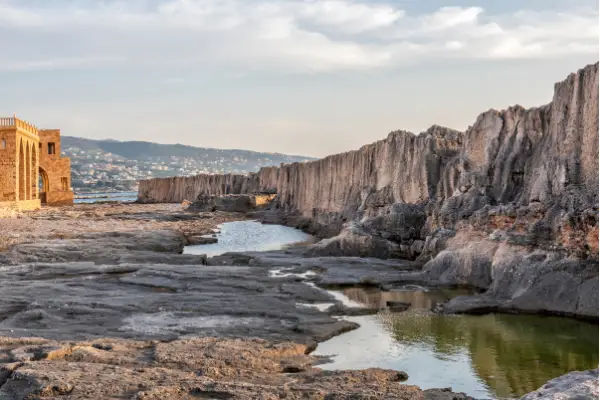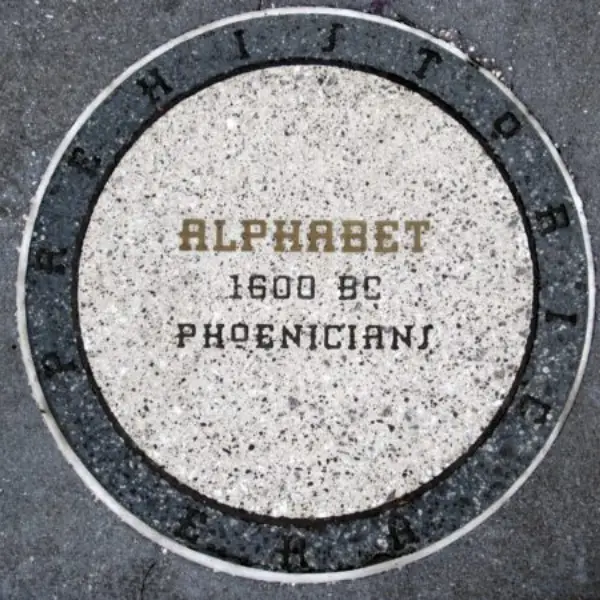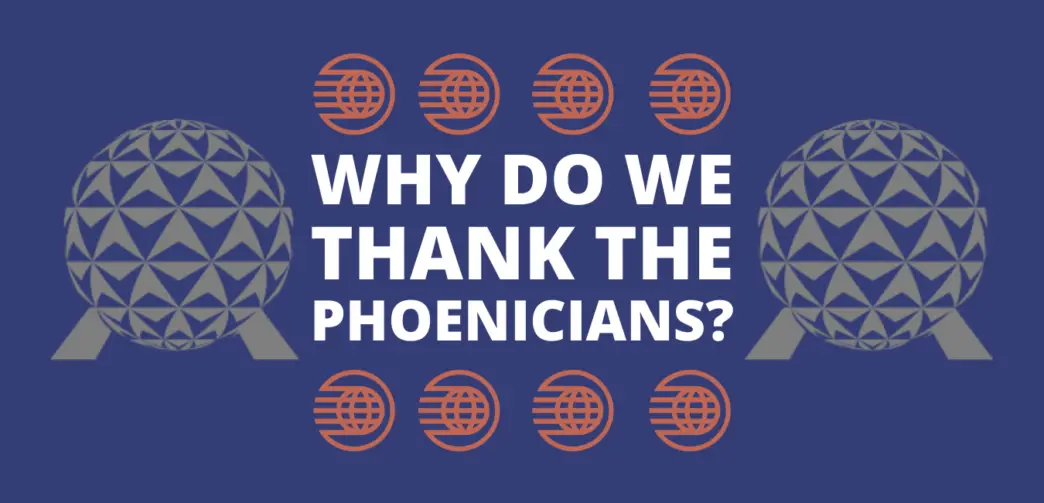The Phoenicians were an ancient civilization renowned for their prowess as traders. However, it’s for their contributions to politics and, more importantly, the modern written language, that we thank the Phoenicians.
This article explores the contributions the Phoenicians made that have influenced our lives today.
Who Were the Phoenicians?
The Phoenicians were a society that emerged during the Bronze Age. Living on the coast, they developed an urban and sea-faring culture, with emphasis on trading.
They were briefly absorbed into the Egyptian Empire, before its collapse, leading to an adoption of some Egyptian and Babylonian influences. After the collapse of the Egyptian Empire, the Phoenicians developed into a collection of independent city-states. The city-states worked together in matters of defense and trade.
For some time, the Phoenician city-states were dominated by the city of Tyre, and established trading posts and colonies from Spain to the Levant. Phoenician colonies emerged and settled all around the Mediterranean.
Eventually they became vassals of the Assyrian Empire, then of the Persian Empire. However, they still remained a power among Mediterranean traders and cultures until they were conquered by Alexander the Great.

Following the conquest of Alexander the Great, the Phoenicians were absorbed into the Hellenic Empire. They gradually lost their cultural identity until they became completely absorbed.
Very little remains of the Phoenician culture, but the influence they had on Ancient Greeks and Hebrews endures, as do the reports and stories of their contributions to neighboring peoples. The trading empire they began later became the foundation for the Classical Empire of the Greeks and Romans.
It was from the Classical Empires of these cultures that the foundations of the modern world eventually emerged.
What Contributions are the Phoenicians Known For?
There are several contributions the Phoenicians are considered responsible for.
As a maritime trading civilization, they contributed a great deal of exploration to the Mediterranean and surrounding areas.
Due to their dependence on sailing and trade, the Phoenicians are credited with several improvements in boat and ship design. They are also credited with improving navigational techniques.
Some historians credit certain Phoenician cities with being the first to develop the beginnings of a democratic government, including voting for leadership positions.
Phoenicians are credited with production of the ‘royal purple’ dyes prized by many ancient monarchs.
However, the contribution the Phoenicians are most known for, and thanked for, is the creation of the Phoenician Alphabet, which later became the basis of almost all written languages used today.

What is the Phoenician Alphabet?
The Phoenician, or Phonetic Alphabet, was a Semitic language that the Phoenicians developed, refined, and used for their trading endeavors. It first appeared around 1000 B.C. and is considered one of the oldest alphabets in human history.
Because they had colonies and trading outposts all around the Mediterranean. Their methods of record-keeping were spread to a large area.
The original Phoenician Alphabet was comprised of 22 characters – all of them consonants. Vowels did not appear until later.
The alphabet was simple and easy to adapt to the requirments of different regions and cultures. This ease of use allowed it to see heavy use among many different groups.
From the Phoenician language and alphabet evolved the languages of Arabic, Greek, and Latin.
These languages later became the foundations for many of the modern languages in use today, including English.
How Much of the Phoenician Alphabet is Still Used Today?
There have been major changes in the written and spoken languages since the appearance of the Phoenician Alphabet. This is particularly true with the introduction of vowels.
Many of the current consonants first appeared with the Phoenician Alphabet. Though the original shapes are different, you can see the influence of the original alphabet in some of the shapes, such as the L, K, M, and N.
There is some similarity to the words Phoenician and phonetic, or phonic. However, the Phoenician alphabet and name is not actually an influence on the word ‘phonetic’. Phonetic was introduced during the evolution of the Greek language.

‘Thank The Phoenicians’ in Popular Culture:
“If you can read this, thank the Phoenicians” – is a well-known mentioned on the popular Spaceship Earth Ride at Epcot. Thank the Phoenicians has become probably the most famous phrase from this classic Disney World attraction at Epcot.
The phrase is a reference to the influence of the Phoenician alphabet on modern languages, and has become a popular saying.
Today you can find this phrase as part of memes and written on shirts, immortalizing the Phoenician contribution to modern society.
What About Other Contributions of Phoenician Society?
The simple 22 letter alphabet developed by the Phoenicians may be their most enduring contribution, but it would not have become so widespread without the other contributions made by this society of city-state traders.
Without their innovations in travel, exploration, and trade, the famed Phoenician alphabet would never have influenced the many communities who eventually adopted it.
Without the influence of their city-states, Greek society might never have developed the way it did.
How Did the Phoenicians Influence Politics?
Phoenician society was formed of multiple allied city-states, much like the Etruscan and Greek societies eventually evolved into. Though one city-state sometimes claimed ascendancy for a period of time, the city-states mostly retained their autonomy.
Even when absorbed by nearby empires, the Phoenician governments retained some level of independence and influence in decision making, thanks to the councils of merchants and traders who formed the backbone of the society.
Some historians beleive the Phoenicians may have had the first elected positions as well.
Councils were thought to be mostly reserved for the wealthy influencers of the city, but it is recorded that the council of Sidon sometimes voted on actions and went contrary to rulers. Some records indicate that at least some of these council members may have been chosen, or elected, rather than receiving an inherited position.
Most Phoenician city-states also had a governor and a commander of the army, second only in power to the monarch.
When did the Phoenicians Have Democracy?
According to historical records, the city-state of Tyre went through a period around 6th century B.C. where it was governed by a pair of judges known as suffetes.
It is believed that these judges were elected to their positions, and that it was this elected system that influenced the policies of the city of Carthage.
Some historians believe that these early limited democratic ideas were adopted by the Etruscans and Greeks later, after Phoenician society was absorbed into other cultures.
What Did the Phoenicians Contribute in Exploration?
The Phoenicians were known to have explored and colonized the entirety of the Mediterranean, and history suggests they may have traveled farther.
Later travels in 600, 450, and 425 B.C. are reported to have traveled around Africa, and as far north as the British Isles.
In 600 B.C. an Egyptian Pharoh named Necho sponsored a journey around Africa. This 3 year voyage was said to have sailed west, starting from the Red Sea, and circumnavigated the African continent.
A Phoenician named Himilco was thought to have sailed to the British Isles on a voyage in 450 B.C., though there are few details in regards to any encounters he might have made.
Another Phoenician named Hanno wrote extensively about the things he witnessed on a voyage around Africa. His tale included descriptions of tribal cultures and gorillas, and was thought to have made it all the way around to the Atlantic Ocean, possibly as far as Gabon.
An expedition funded by King Solomon was thought to have traveled as far as the Indian Ocean.
How Did The Phoenicians Accomplish These Journeys?
The widespread travels of Phoenician traders were made possible by another set of innovations the Phoenicians developed – new navigational techniques. Among these techniques was an important one still in use today – celestial reckoning.
Phoenicians are reported to have developed some of the first techniques involving navigation by celestial bodies, at least for western cultures. The constellation now named Ursa Minor was once called the Phoenician, as a testment to their navigational skills.
In addition to taking reckoning from the sun, Phoenicians made extensive use of the Pole Star, or North Star as a navigational aid.
Another innovation thought to be Phoenician in origin, or at least developed to a fine art by their mariners, was that of using sounding leads to measure depth. This practice can be vital for ensuring a ship avoids rocks or dangerous shallows.
Did Phoenician Ship Design Influence Their Trading and Travel Skills?
Phoenicians are credited with several developments that were later considered essential for maritime vessels.
The first development the Phoenicians are credited with was that of keel, which functions as the spine of a ship and helps it maintain stability This allowed bigger ships, and diverse designs for special functions.
The Phoenicians are also credited with being some of the first to use caulking between the planks. Caulking helps improve the watertight nature and general seaworthiness of a ship.
There are some reports that Phoenicians also refined use of the sail and sailing vessels, as well as use of the crow’s nest for navigational aid.
As Phoenician ships developed into three distinct types, another innovation was developed – the prow battering ram, to be used for defense when encountering pirates.
What Three Types of Ships Did Phoenicians Have?
The first type of ship was the trading vessel. It had a wide-bellied hull, convex stern and prow, and plenty of room for cargo. It’s estimated that these ships could carry as much as 450 tons.
The average fleet of merchant ships consisted of up to 50 ships, often escorted by Phoenician warships.
Phoenician warships had a convex prow, a large sail, and two banks of oars for propulsion. A battering ram was mounted low on the prow to provide additional protection for the merchant ships they escorted.
The third type of ship was a small ship used primarily for short trips and coastal fishing. It had a horsehead prow and single set of oars.
All three of these ships had a shallow keel for better handling in coastal waters.

What Sort of Trading Did the Phoenicians Do?
Almost all of the innovations the Phoenicians made were to aid their main method of sustaining their communities. Trade. Specifically, maritime trading.
To that end, the Phoenicians had a number of valuable commondities they traded for. Among them were woods, like cedar, unique dyes and, at one point, even monetary development.
As their skills and reputations on the oceans grew, the Phoenicians were also able to trade their services as seamen and tradesmen to other communities. Countries often competed for the privilege of hiring Phoenician ships and crews for various ventures.
One example was the Persian Emperor Xerxes, who was reported to sail only on Phoenician vessels with Phoenician crews.
What Were the Main Phoenician Commodities?
Aside from their skills, Phoenicians were primarily famed for their lumber trade and their unique purple and crimson dyes.
Phoenician cities, especially Tyre, were located near huge supplies of lumber, particularly cedar. Cedar was a prized wood for many types of construction. Phoenician ships often transported large quantities of cedar lumber to various countries for use in everything from ships to furniture.
Another luxury item was a unique purple dye manufactured from a species of shellfish called the Murex. The Murex was a widespread mollusk, but it required great quantities of the shellfish to produce a small amount of the ‘royal’ or ‘Tyrian’ purple dye.
The purple dye was so expensive only nobility an royalty could wear it. Though less common, the dye could also be altered with strong soaps to create a unique crimson shade.
Because of their widespread trade routes, Phoenicians also became suppliers of things like gold, silver, tin, copper, amber and other commodities. They provided many of the metals crafted and used by other countries.
Did Phoenicians Have Any Manufacturing?
Phoenicians were reported to be skilled textile producers, especially important with their purple dye.
Certain areas under Pheonician control held prime sand for glass production. There are some theories that they may have revolutionized glass making techniques like the blow-pipe method, but there is some debate whether the method originated with the Phoenicians or the Egyptians and Syrians.
Woodworking and metalworking were also prominent trades. At one point, the city of Tyre was a premier supplier of minted coins, primarily shekels.
Thank the Phoenicians
The Phoenicians are most remembered for their contribution to the written language, but their developments in seamanship, navigation, trade and politics are still with us today and that is why we thank the Phoenicians.


